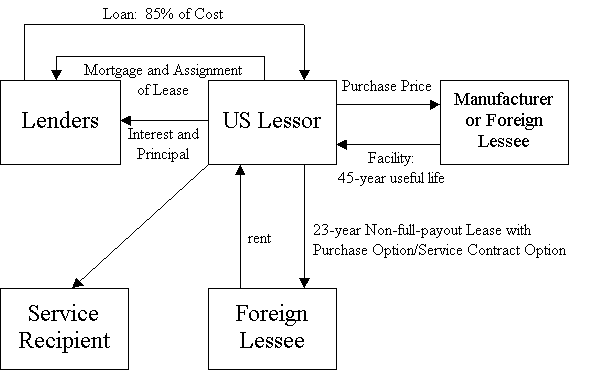Service Contract


A service contract is an arrangement between a service provider and service recipient and is characterized by a separate lease and service contract term. The lease usually ranges from 22 to 27 years while the service contract ranges from 13 to 18 years in length. The combination of the lease and service contract terms is typically 80% of the useful life of the asset. While the equity return is based on the overall term, depreciation occurs over 125% of the lease term only which differs from a pickle structure where depreciation occurs over the entire deal term. The participants in this type of transaction are the service provider or lessor, service recipient or lessee, operator, and customer. Typically, a service contract is used with assets such as gas, water, and power distribution networks and generation facilities. However, they can also be applied to real estate and securitization transactions.
A service contract is considered a property lease under section 7701(e) of the IRS Code if
certain requirements hold. These requirements are divided into general and special criteria groups.
Section 7701(e) outlines six criteria in the general case which indicate when a service contract
should actually be classified as a lease:
To obtain classification as a service contract, the first two rules essentially require a
management contract so that the service provider maintains control of the property. The service
recipient is allowed to retain an interest in the land underlying the asset via a ground lease without
being considered in physical possession of the property. However, they will not be able to mandate
how the property is maintained, operated, or improved. There are five rules to consider which
determine “significant” economic interest in a property:
To be considered a service contract, the fourth general rule requires the service provider to bear the risk of reduced receipts or increased expenses as the result of non-performance under the contract. An exception to this rule is a provision which allows for an output contract to remain in force during short shut-downs of a facility. To resemble a service contract, the fifth rule states that services must be provided to someone other than the service recipient. For example, a purchaser of power should allow sales to customers and not use all of it for themselves. The last rule states that the total contract price should “substantially” exceed the value of the property to be classified as a service contract. Thus, if the contract price is derived mostly from recovery of costs of the property or there is a separation between use and service charges of the property, then the contract will resemble a lease.
An important item to note is that not all six requirements need to be satisfied to be considered a service contract. Section 7701(e) does not weight any of the criteria but simply allows for a contract either resembling a lease or a service contract. This would imply that a simple majority of criteria is necessary for classification.
Section 7701(e)(3) provides special rules for determining whether a contract is a service contract.
These special rules apply only to the following types of facilities: qualified solid waste disposal,
cogeneration, alternative energy, and water treatment works. The following four special rules replace
the general rules for the above facility types and indicate when a service contract should actually
be classified as a lease:
There are three main differences between the special and general rules. The first one is that with the special rules, lower operating costs cannot be passed on to the service recipient. Secondly, the risk of temporary shut down of the facility can be shared by the service recipient. Lastly, all costs and benefits due to changes in the law can be passed on to the service recipient.
Service contracts have less tax downside and less financial risk as well as more even returns over time. Also, the contract must be carefully structured to qualify as a service contract. While it is easier to qualify under the special rules, there are many fewer available facilities. The main tax benefit for classification as a service contract is the allowance for depreciation over 125% of the lease term rather than 125% of the combined lease and service contract terms.